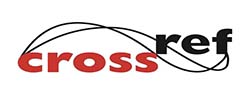Author: Mudasir Hassan, Khurshid Ahmad
![]() DOI: 10.22161/ijeab/2.5.6
DOI: 10.22161/ijeab/2.5.6
Keyword: Walnut, Anthracnose, Marssonina juglandis, Perpetuates, Management.
Abstract: Walnut (Juglans regia) an important commercial dry fruit crop, is attacked by several diseases causing economic damage and amongst them walnut anthracnose caused by Marssonina juglandis (Lib.) Magnus has posed a serious threat to this crop in India and abroad. Walnut anthracnose results in reduction in quantitative parameters such as size, mass and actual crop of nuts, failure in metabolic processes in leaves and change in biochemical indices. Premature loss of leaves results in poorly-filled, low-quality, and darkened kernels. The disease initially appears on leaves as brown to black coloured circular to irregularly circular spots. These spots eventually enlarge and coalesce into large necrotic areas. Later on these infected leaves turn yellow and drop prematurely. Infection of anthracnose disease on leaves occurred at relative humidity above 95 per cent and severity of infection was not influenced by temperature between 10-32oC but was significantly reduced below 10oC. Anthracnose of walnut has been reported to be caused by Marssonina juglandis (Lib.) Magnus,with Gnomonia leptostyla (Fr.) Ces. and de Not as its perfect stage reported that acervuli produced by fungus appeared early in the season as small black specks on the lower surface of diseased leaves. The pathogen(G. leptostyla) reportedly perpetuates primarily on infected leaf debris, and ascospores produced in perithecia act as the primary inoculum during spring. Burying (ploughing in) the fallen leaves in autumn and winter ,pruning of infected twigs and branches and adequate nitrogen fertilization has been recommended for the management of walnut anthracnose as well as under planting walnut saplings with annual and perennial legumes has been shown to increase foliage nitrogen content. Different formulations of mancozeb, dithianon, flusilazole and copper fungicides controlled anthracnose disease.
| Total View: 4997 | Downloads: 724 | Page No: 2319-2327 |
|
Cite this Article:
MLA
Mudasir Hassan, Khurshid Ahmad, P.(2017).Anthracnose Disease of Walnut- A Review. International Journal of Environment Agriculture and Biotechnology(ISSN: 2456-1878).2(5), 2319-2327.10.22161/ijeab/2.5.6
Mudasir Hassan, Khurshid Ahmad, P.(2017).Anthracnose Disease of Walnut- A Review. International Journal of Environment Agriculture and Biotechnology(ISSN: 2456-1878).2(5), pp.2319-2327.
Mudasir Hassan, Khurshid Ahmad. 2017."Anthracnose Disease of Walnut- A Review". International Journal of Environment Agriculture and Biotechnology(ISSN: 2456-1878).2(5):2319-2327.Doi:10.22161/ijeab/2.5.6
Mudasir Hassan, Khurshid Ahmad."Anthracnose Disease of Walnut- A Review", International Journal of Environment Agriculture and Biotechnology,vol.2,no. 5, pp.2319-2327,2017.
@article { mudasirhassan2017anthracnose,
title={Anthracnose Disease of Walnut- A Review},
author={Mudasir Hassan, Khurshid Ahmad , R},
journal={International Journal of Environment Agriculture and Biotechnology},
volume={2},
year= {2017} ,
}
























